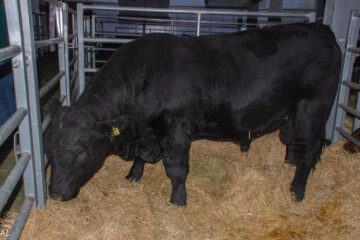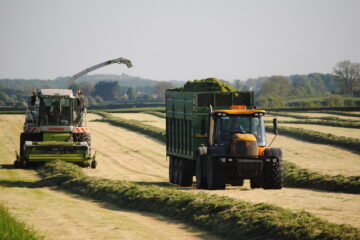Field Boundaries
Field boundaries are a common feature of the Irish countryside. Those of value to wildlife include:
- Hedgerows
- Stone walls
- Fences
- Watercourses
They are key areas for nature providing food, water, shelter, nesting sites and essential corridors for movement of wildlife between otherwise isolated habitats. They are home to a variety of wildlife including birds, small mammals, and many insect species including pollinators such as bees and hoverflies.
For the farmer, they may provide shelter and shade for livestock, prevent soil erosion, and help reduce agricultural runoff reaching rivers and causing pollution. There are a variety of actions farmers can take to improve the quality of their field boundaries.
Actions on the Farm
Getting Started:
MAP WHAT’S ALREADY THERE:
- The first step to improving the value of your field boundaries is to have a look at their current condition and what wildlife they support.
- Take some time to record the plant and animal species in your field boundaries, this will help identify which areas are the best and worst for biodiversity. Once you know this, it will be easier to plan improvements.
- There are several free and easy to use apps that can help with this task. These apps can help to identify and record plants, bird song, or make maps for what habitats are on the farm.
USEFUL APPS:
- Biodiversity Data Capture: allows you to record and submit wildlife sightings to the National Biodiversity Data Centre.
- BirdNet or similar: helps to identify bird calls.
- Plantnet: helps to identify plants using photos.
- ViewRanger: mapping app that can be used to map habitats found on the farm.
Going Further
HEDGEROWS:
REPAIRING DAMAGED HEDGEROWS
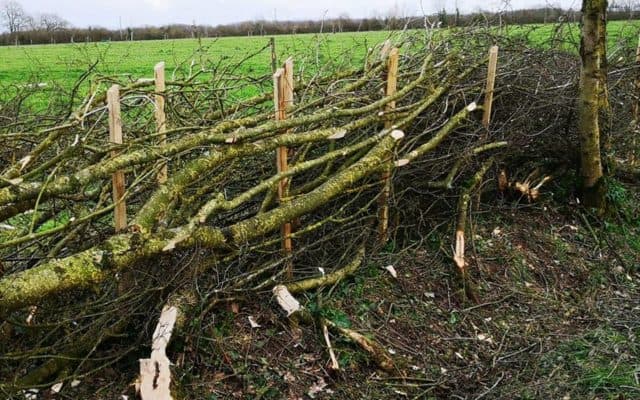
- Gaps or ‘leggy’ hedgerows are less beneficial to wildlife and offer less shelter to livestock. Planting any gaps with native flowering hedgerow species will increase available habitat for wildlife and provide food for important species such as pollinators.
- Fill gaps in hedges with native – and preferably local – species to increase the hedgerow’s value for nature. You can do this by laying, coppicing or planting up the gaps and improving the leggy areas.
- Laying is the best method of rejuvenating gappy or damaged hedgerows as the hedge continues to flower providing food for wildlife. This involves cutting the stems part the way through, bending them over and interweaving them.
- Another option is coppicing – this is cutting the stems all the way through. However, coppiced hedgerows may take years before flowering again so are less beneficial to wildlife while they regrow. Both methods should be done in short sections rather than long ones as both take a while to provide habitat for birds and insects.
MANAGING HEDGEROWS
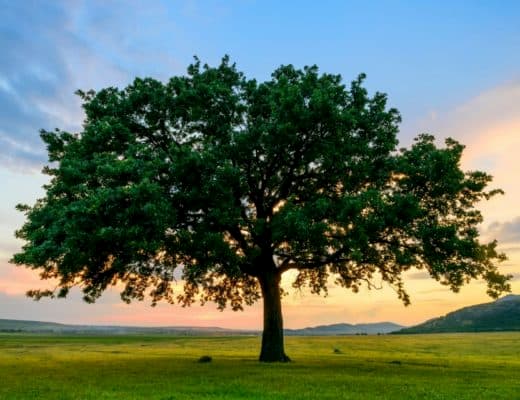
- Ideally hedgerows should be left grow and expand as much as possible but this is not always possible on a farm and they have to be managed.
- To avoid the whole lot being cut at once, hedgerows should only be cut on a 3-5 year rotation. Ideally, only cut a short section of the hedgerow in any one year as this allows flowers and berries to grow on the older trees.
- In a 3- year rotation cut only a third in winter. If the fields either side of a hedgerow are under the same management, consider cutting one side this year, other side next.
- Aim to shape your hedgerow into a roughly triangular A-shaped profile, with a wide base; however, as before do consider leaving one side uncut altogether to encourage growth. The broad base allows light in at the base which encourages dense growth at a ground level which is more ideal for some birds nesting.
- Take care to avoid cutting mature trees or saplings that will become your future hedgerow trees. These trees form an important canopy
- habitat for birds.
- Take time to observe as ‘one size doesn’t fit all’ – for instance if you have a row of one species, such as Sycamore or Ash which can be gappy at the base but have a dense canopy consider it’s cutting management in patches to allow more light in and therefore more diversity such as ivy, honeysuckle and other smaller flowers in between the healthier specimens.
- Under the Irish Wildlife (Amendment) Act 2000, it is important to note that no hedge cutting can be done between the 1st of March and the 31st of August.
- However, if you can delay trimming as late as possible such as January and February, the berry crop will provide valuable food for wildlife. If this is not possible, a 3-year rotation is required to provide a bumper crop of berries in one year of the rotation.
- Cutting is usually undertaken with a flail, but a circular saw is a less damaging alternative which creates a cleaner cut and encourages better re-growth.
- Reduce cutting intensity each year to allow for the expansion and the diversity of your hedgerow to increase.
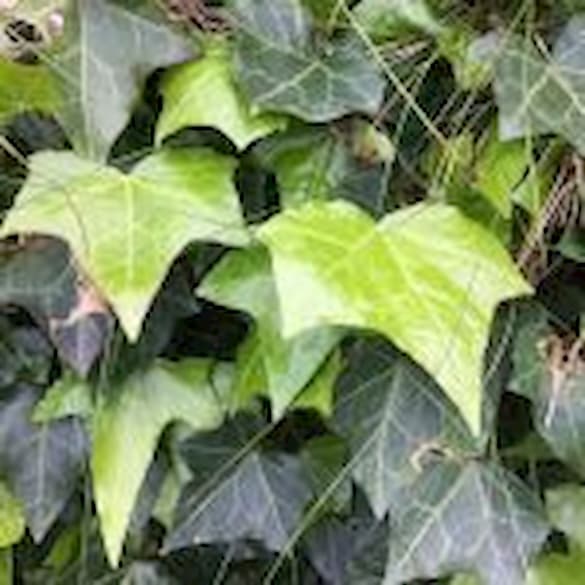
“Ivy – it has a bad name but really it is an important habitat, shelter and food source for animals in the winter so no need to be drastic with its management. It adds to the diversity. Observe the benefits; there are negatives but they are outweighed by positives. Ivy does not kill healthy trees [it is not a saprophytic plant that sucks nutrients from host trees but it does add weight to leafless trees in winter making them more susceptible to wind blow, although usually only those already diseased or weakened]. Ivy can be managed without killing it. Keep questioning everything and observe and record.
Past management may not be applicable in the future. Keep learning.”
Kim McCall, FFN Ambassador 2018
PLANTING NEW HEDGEROWS
- When planting new hedgerows, use a variety of flowering species. If possible, choose locally-sourced native shrubs as they are adapted to local conditions and better for wildlife than introduced species. Also include native trees interspersed along the new hedgerow which should be allowed to grow into mature, full height trees.
- When planting, consider how to connect the new hedgerows to other natural features. Wildlife uses hedgerows for navigation and foraging; connecting new hedgerows to existing ones may help support the spread of wildlife into new areas.
RETAIN THE OLD
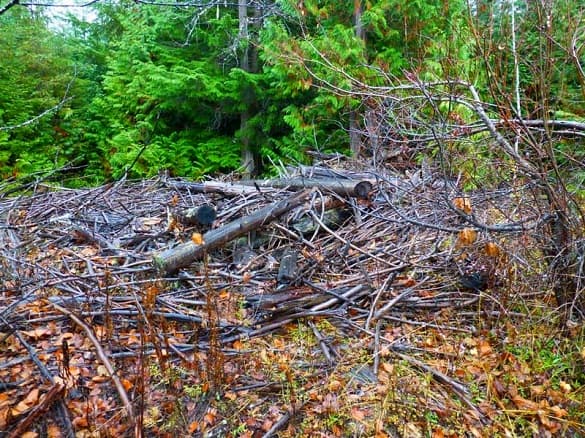
- Where they are not a hazard or where they don’t prevent younger trees from growing, retain old, dying and dead trees. They can be really important for nature as they support important insect communities, bat roosts and cavity-nesting birds.
PROTECTING HEDGEROWS AND THEIR BASES FROM LIVESTOCK
- To prevent livestock from damaging new and existing plants, especially between May-July, consider fencing up to 2-meters out from the hedgerow base and other field margins. Avoid grazing or cutting this area until after the main flowering period.
- Avoid using sprays or fertilisers near to these margins as they can have an extremely negative effect on the variety of plants and animals that live there. Over time, this area will gradually develop the natural vegetation needed to support a range of wildlife.
CONTROLLING WEEDS
- Good management is key to controlling the spread of weeds. Avoiding fertiliser or slurry input near field boundaries limits the growth of weeds such as docks which thrive in nitrogen-rich areas.
- Docks, thistles and nettles can all be topped at flowering to prevent their spread, but note that they are all valuable for wildlife: finches feed on docks in seed, butterflies and bees drink the nectar in thistles, and nettles provide the food plant for certain species of butterfly’s caterpillars such as Peacock & Red Admiral so consider leaving patches of these too (especially in sunlight areas).
- For localised weed issues with plants such as ragwort, manual weeding is effective. However, where ragwort can be safely left, it supports insects like the cinnabar moth caterpillars.
- Mulching can be used in problem areas to prevent the weed seedlings from germinating, by blocking their access to light, but too much mulching can lead to build up of nutrients favoured by nettles.
- For invasive species it is important to use the appropriate removal method to prevent their further spread. If you suspect you have invasive species growing on your land you can consult the National Biodiversity Data Centre’s site for more information on the problem species (www.biodiversityireland.ie/projects/invasive-species).
STONE WALLS
- Stone walls support various plant species as well as cavity-dwelling animals such as insects, snails and small mammals. This is because the variety of nooks and crannies in the walls offer slightly different micro-habitats that suit many different types of plants and animals.
- Try to minimise the disturbance to hibernating animals by avoiding repair works in the late autumn /winter.
- Avoid using sprays near the walls as it can harm the wildlife and/or their food sources.
- Avoid planting trees or shrubs too close to the walls as their roots can damage or topple sections of wall.
- Maintaining the walls in a good state is the best way to ensure that they provide a home for wildlife into the future.
FENCES
- Avoid sprays, fertilisers and major disturbances in these areas to allow natural communities to develop.
- Leave areas of long grass along fences for bumblebees to nest. If cutting is needed in these areas, where possible wait until after flowering (August onwards) or note that there are short circuits you can acquire to prevents your fences earthing.
WATERCOURSES
- Maintain at least a 3-metre buffer of unfarmed land along rivers and a 2-metre buffer along streams. This should be done by fencing off the watercourse to prevent livestock or machinery from entering this area.
- Protecting water from livestock is especially important as animal faeces can cause water pollution and damage aquatic habitats. This may require installation of drinking points away from watercourses for stock if that is their main access for water.
- Avoid sprays and fertilisers along watercourses as these can also get into the water systems and can be carried long distances.
- Avoid sprays, fertilisers and major disturbances along ditch banks. Banks slope and vegetated margins are important habitats for wildlife in which many species including bees may find essential resources such as food and nesting/overwintering sites.
For more updates follow us on Twitter
You can also find us on Facebook
Article taken from https://www.farmingfornature.ie/your-farm/field-boundaries/


